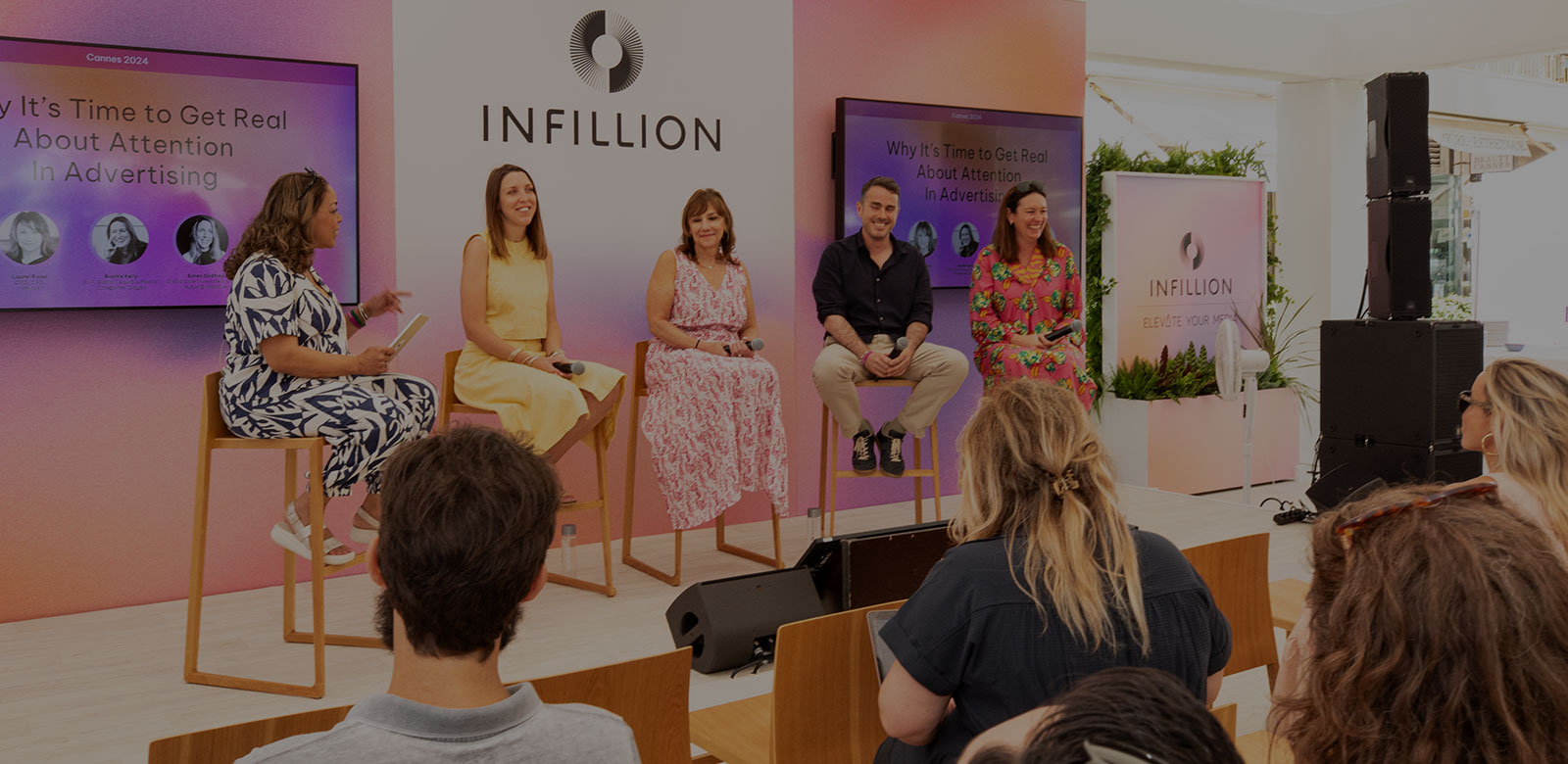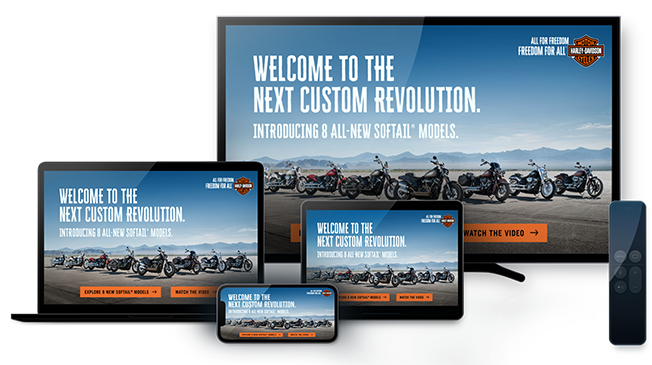Untangling the Reality of Attention Measurement

Thanks to the explosion of digital media, consumers see thousands of ads a day. Paying attention to that many ads is downright impossible. At the same time, the traditional “purchase funnel” is collapsing, with some purchase decisions made in a split-second or less, and others taking months while a consumer floats in a stage of “constant consideration.” So some creative requires intense amounts of attention to drive a sale – and other ads, very little at all.
Attention – and standardizing the measurement of it – is of growing importance in the advertising industry. In an Infillion-hosted panel at Cannes Lions, “Why It’s Time To Get Real About Attention In Advertising,” moderator Carryl Pierre-Drews, EVP and CMO at the IAB, explained the industry trade group’s new attention task force and why it was put into place. Should attention measurement be rooted in biometric signals, like eye tracking? Or in how long an interactive ad was engaged with? All of those are relevant, according to the IAB.
The panel came in conjunction with the release of Infillion’s latest research report, “Eyes Wide Shut: Traversing The Attention Spectrum.” This report found that advertisers face an uphill battle in capturing attention, given that 90% of consumers say that they have strategies for avoiding ads.
“Experiential attention is the way to really think about it,” Infillion chief revenue officer Laurel Rossi said on the panel. In its new report, Infillion defines experiential attention as “earned, active, and engaged attention.” That’s a big change from the in-your-face, unwanted attention that has characterized many loud and flashy ads over the course of digital advertising’s history – grabbing a consumer’s focus whether they want to focus on it or not.
The Attention Paradox
For one, advertisers need to keep in mind that attention isn’t actually their end game. Panelist Marc Guldimann, CEO of attention measurement company Adelaide, put it plainly: “The point of advertising isn’t to capture attention, it’s to drive business outcomes.” He cited research from the ARF that found that the ads that captured the longest duration of attention weren’t actually the most effective ads.
This is, in part, because “people pay more attention to things they aren’t familiar with,” Guldimann said. But it’s also because attention doesn’t inherently lead to a sale.
“Focusing solely on attention is going to kill your ROI. It’s going to kill your reach,” said Soren Godfrey, global chief investment officer at Initiative agency Rufus. “It’s one of many factors that we consider.”
But, still, attention measurement hasn’t yet found its way into all holistic advertising models. “What we’re thinking about is end-to-end business plans,” said Sophie Kelly, SVP of global tequila and mezcal categories at Diageo, representing the brand side of the industry on the panel. “What would really move it forward is if we started to think about attention in those end-to-end business plans.”
Standardizing the Conversation Around Attention
“Too often we’re having conversations about measuring attention and we’re not coming at it from the same angle with the same expectation,” Sophie Kelly said.
Infillion’s Laurel Rossi brought up the concept of “metric bingo,” the idea that attention just adds another set (or multiple sets) of measurement criteria to an already-cluttered campaign metrics ecosystem. “I think everybody’s confused and the industry owes us some more education.”
One challenge is that many people in advertising assume they know what it means to get a consumer’s attention. That’s not enough to make it a sustainable success metric.
“Attention is intuitive,” Soren Godfrey said. “But that’s not enough for people to believe it and to use it as one of their north stars in planning, so [it’s crucial to be] proving out the link, making it a repeatable format, showing that it works, and planning for it to work down the road, [that] this is a front-end input that we are using.”
The Push for Premium
The panel was in agreement on the fact that getting high-quality attention often involves spending more money for premium placements or media environments with fewer ads. “Cheaper is not always better and there’s so much focus on efficiency in our business,” Rufus’ Soren Godfrey said, emphasizing the urgency to “optimize away from crappy ad formats.” “The quality is just so much more important than the efficiency…Spending a little bit more to get the right outcomes is really important.”
Adelaide’s Marc Guldimann added another advantage to focusing on premium media: “One of the most interesting ways to use attention metrics is to hold constant the quality of media. Once you hold constant the quality of media you can really understand if your creative’s working.”
Increasing the drumbeat that insists on high-quality attention – not just attention more broadly – can potentially push the industry out of that long standing insistence on efficiency at all costs.
“The metrics that advertisers use create incentives for the rest of the market,” Guldimann explained. “When advertisers go out in the market and say, ‘I want to buy high quality. I want to buy attention,’ it creates a positive feedback loop.” Publishers will explore formats and user interfaces that put fewer ads on screen at once. Consumers will get a better experience.
And that, in turn, will improve the outlook in ROI for brands.
Follow along with Infillion’s Cannes Lions activation on our LinkedIn page.
Subscribe to our blog:
Related Posts:

Independent Agencies Are Rewriting the DSP Rulebook
For more than a decade, programmatic buying relied on systems that delivered automation and scale, but offered limited visibility into how decisions were made. But those constraints are now harder for agencies to justify. Independent agencies are no longer willing to...

From Patchwork to Powerhouse: How Independent Agencies Buy Media Today
For years, independents were told they couldn’t match the scale or sophistication of the holding companies. That story is over. Our latest research, The Independent Agency Blueprint, shows independent agencies are blending old-school relationships with new-school...

How Real Attention Stops Ad Fraud in Its Tracks
Imagine you’re sitting at a nice table in your favorite restaurant. You order a meal—pricy but worth it—and get ready to dig in. The server brings you your dinner…and it’s missing an entire side dish. “Excuse me,” you might say. “Where is the rest of my food?” “Ah!...
Let's Connect

